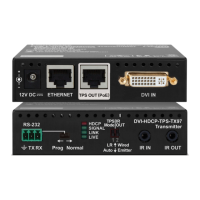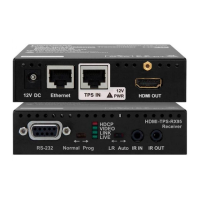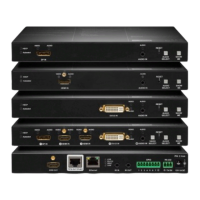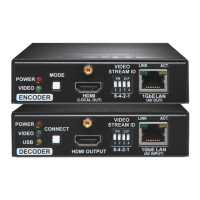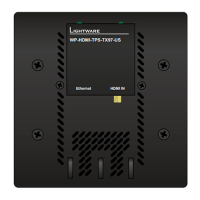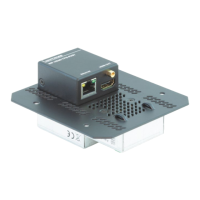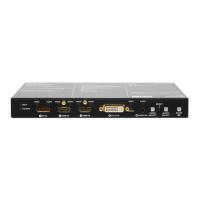8. LW3 programmers’ reference
8.1. Overview
Lightware 3 (LW3) protocol is used by the 25G hybrid matrix, the MODEX family and the
new series of Lightware TPS and OPT products, including the HDMI-3D-OPT-TX200 series
transmitters. The protocol (LW3) is ASCII-based and all commands are terminated with a
carriage return (Cr, ‘\r’) and line feed (Lf, ‘\n’) pair. It is organized as a tree structure that
provides outstanding exibility for implementing a human readable, but programmatically
still ease to parse, which is suitable for different products with a different feature list.
In order to implement a exible, easy-to-use protocol that is straightforward to adapt to new
devices and provides outstanding scalability and sustainability, we decided to organize all
settings, parameters and properties of the device to a tree structure with ‘nodes’, ‘properties’
and ‘methods’.
8.1.1. Elements of the tree structure
ATTENTION!
All names and values are case-sensitive. The space character is replaced by the ‘●’
character in the elements and commands descriptions.
8.1.1.1. Node
▪ The basic building block of the tree structure is the ‘node’.
▪ The node can have multiple child nodes, but only one parent.
▪ The tree has only one root the ‘root node’.
▪ The leaves of the tree are also nodes, which do not have child nodes.
▪ The nodes are separated by a slash (‘/’) character.
▪ All the slashes are ‘right slashes’, no backslash is used.
▪ The identier of the root node is a slash (‘/’)
▪ The node name can contain the elements of the English alphabet and numbers.
▪ Recommended convention for case sensitivity:
– Fix nodes (that cannot be altered) are capitalized.
– User created nodes can contain both lowercase and capital letters, no restrictions.
▪ The path of a node has to contain all parent nodes from the root node.
Format: (the root node): nX●/
Path: nX●/[nodeName]/[nodeName]/[nodeName]
Legend:
n: node
‘X’ can be:
‘-’: default for a node.
‘m’: this is a manual for the node.
‘E’: this is an error message for the node.
's': this is a symlink node.
'v': this node has virtual children.
'r': this is a remote node.
INFO
All parent nodes must be listed in the path of a node.
Page 62 / 106 LW3 programmers' reference
